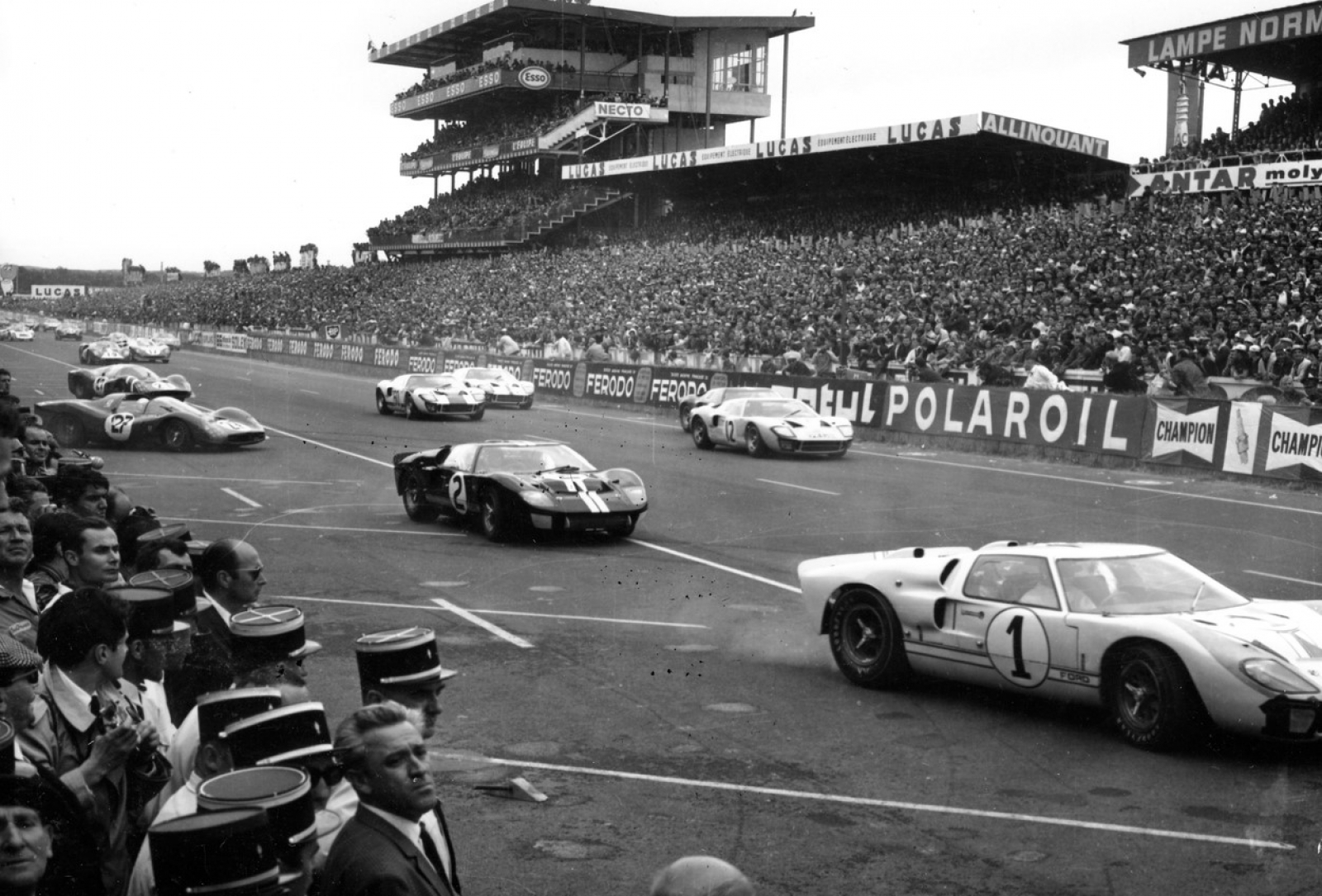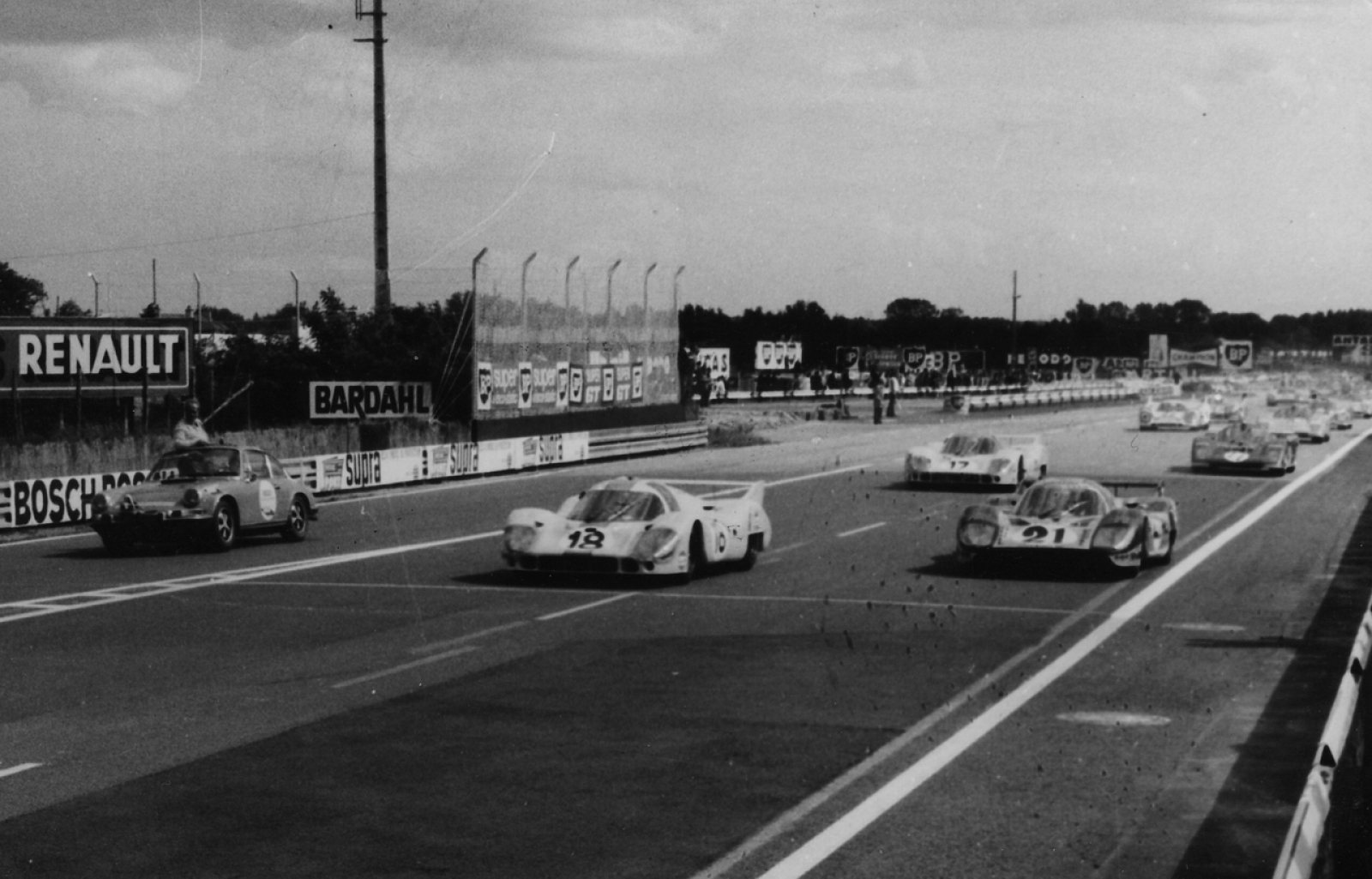24 HOURS CENTENARY – THE LE MANS EXCEPTION ⎮ In addition to its extensive history and on-track exploits, the legend of Le Mans was built on a unique starting procedure. For nearly 50 years, the image of drivers sprinting across the track to their cars was a part of the collective memory, before the standard starting procedure began in 1971.
Though the Le Mans-style start is the most famous, there have been four starting procedures employed at the 24 Hours throughout its history: standing start (1923 and 1924), Le Mans-style (from 1925 to 1969), standing start with driver at the wheel (1970) and rolling (since 1971).
After two years of the inital standing start, the first Le Mans-style start was given in 1925 at Mulsanne. The owner of the Raineries land that had been used in 1923 and 1924 tripled the rent, so the ACO decided to opt for the middle of the Mulsanne Straight instead.
The Le Mans-style start – during which drivers would run to their cars placed on the opposite side of the track – was thrilling to watch. However, it was called into question in 1968 following Belgian driver Willy Mairesse's accident in the first lap, most likely caused by a poorly closed door on his Ford GT40. Tragically, Mairesse never returned to competition and ended his own life in September 1969. Just three months earlier, fellow countryman Jacky Ickx set out to revolutionize the start at the 24 Hours.
1969 | Jacky Ickx "walks" to victory
The danger stemmed mainly from the fact drivers would take off down the track without properly harnessing themselves in their seat, but that style of start also caused an alarming amount of contact between cars. For those reasons, Jacky Ickx decided to take a stand in 1969. When the flag was lowered, he walked across the track, got behind the wheel of his Ford GT40, buckled his harness and started the engine as pole-sitter Rolf Stommelen's Porsche 917 was already fast approaching Tertre Rouge. The next day, Ickx won the race in the final lap just a few meters ahead of Hans Herrmann's Porsche 908.
The start was slightly modified the following year with drivers seated in their cars instead of running to them, but a completely new starting procedure was adopted in 1971. The cars – in rows of two in descending order of times achieved in qualifying – got underway seven and a half minutes before the actual start time behind the official leading car for a progressive warm-up lap. The leading car exited the track before the starting line and the pole-sitter set the pace for the last 200 meters. Sometimes called the Indianapolis-style start in reference to the legendary Indianapolis 500 (800 km) in the U.S., this starting procedure is still used today.
Fun facts…
In the history of the 24 Hours there have been a few surprising "manoeuvres" performed by the drivers, such as the masterful spin by Edgar Berney in his Bizzarini or the start with 56 cars (instead of 55) after an Ecuadorian crew forced an access door to the track with the promise of earning a handsome sum were it to take the start. And let us not forget when, in his haste, Jean Manuel Fangio missed the start after getting the gear lever stuck in his pant leg. An unusual occurrence of that nature was due to the fact that taking the lead by the end of the first lap was highly sought-after publicity for car marques, and a source of bragging rights for drivers who were sometimes rewarded with attractive bonuses.
Interestingly, the ignition on the left of current Porsche road car dashboards is a direct nod to the Le Mans-style start, allowing the driver to combine starting the car with the left hand and changing into first gear with the right. The slightly sloping track at the 24 Hours also required chocking the rear wheel of the cars. For a long while the ACO provided a nice blue and yellow block in the colours of the club to avoid having to apply the handbrake, and it was not uncommon to see drivers of open cars practicing "flying" over windscreens and doors to save time.
PHOTOS (Copyright - ACO Archives): LE MANS (SARTHE, FRANCE), CIRCUIT DES 24 HEURES, 24 HOURS OF LE MANS. From top to bottom: the first Le Mans-style start in 1925 (Lorraine Dietrich, winner); the 1966 running dominated by Ford and culminated in the marque's first win; the first rolling start led by the Porsche 917s of Pedro Rodríguez/Jackie Oliver (#18) and Vic Elford/Gérard Larrousse (#21), note the Porsche 911 pace car at left separating itself to make way for the start.



